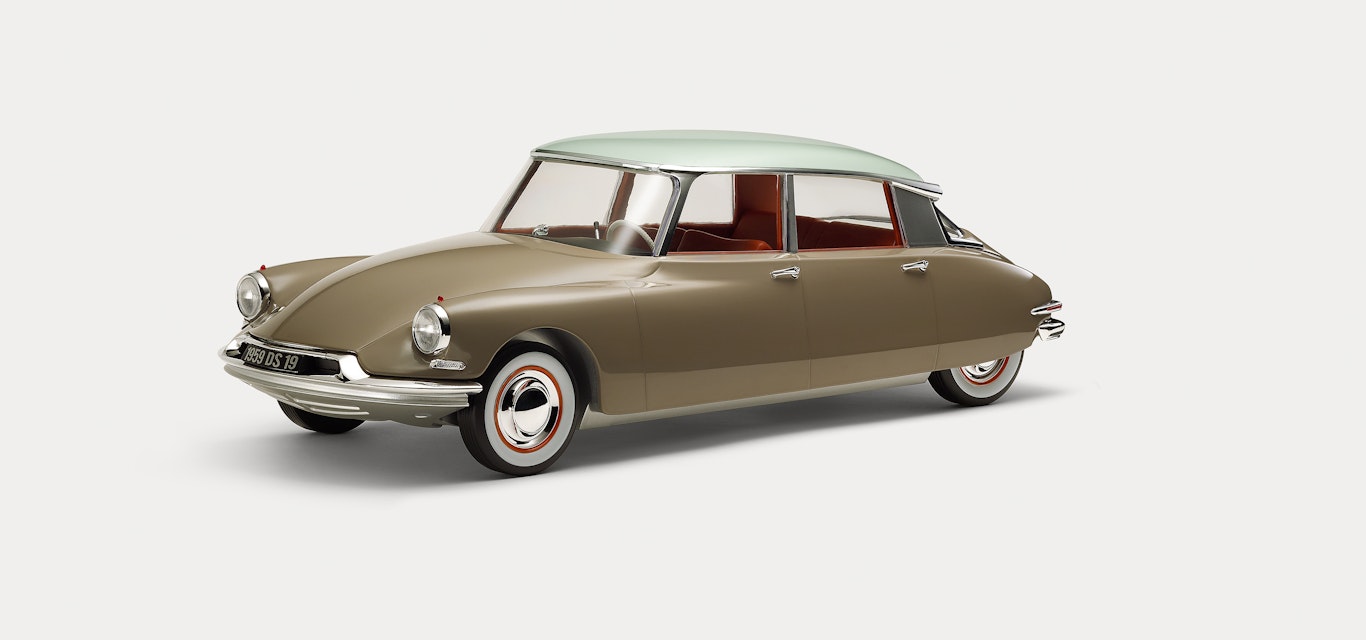In reverse: La Goddess
A stunning symbol of French ingenuity, the Flaminio Bertoni-designed and supremely aerodynamic Citroen DS introduced multiple world firsts, most notably its innovative hydro-pneumatic suspension.
Model: Citroen DS 19
Engine: 1.9-litre pushrod four-cylinder, front mid-mounted (56kW/137Nm)
Visitors to the 1955 Paris Motor Show must have thought they’d been transported into the future when the covers were whipped off Citroen’s radical, teardrop-shaped DS 19 executive sedan in October of that year.
The French car maker had spent the better part of two decades developing the DS 19 and did not disappoint with its other-worldly styling and a dizzying array of technical innovations beneath its beetle-like carapace.
This included fully independent hydro-pneumatic suspension, which delivered superb ride comfort and road-holding unmatched by other cars of the era. The innovative system provided a self-levelling ride, along with driver selectable ride height, allowing the DS to hoist itself in the air for a flat tyre to be changed, or even drive on three wheels.
Changing a flat rear tyre required the fully faired quarter panel to be removed via a single bolt, which was also all that was required to remove the car’s other non-stressed and lightweight body panels.
Innovative centre-lock wheels were another unusual attribute of the original DS, allowing the wheels to be changed very quickly; handy for owners but also advantageous during a storied motorsport career that included two Monte Carlo Rally victories.
The car’s steel monocoque structure incorporated an early example of a crash crumple zone, while the mixed use of materials such as aluminium for the bonnet and fibreglass for the roof were daring innovations. So too the inboard front disc brakes and fully hydraulic braking system, both of which have entered the history books as production car firsts.
A three-speed manual gearbox mounted ahead of the longitudinal four-cylinder engine was another innovation, requiring no clutch due to its semiautomatic hydraulic-shift mechanism, but the ageing engine was a weak link in an otherwise revolutionary package.
The engine and many other aspects of the original DS would be upgraded during a 20-year production run that saw almost 1.5 million vehicles manufactured in sedan, station wagon and two-door décapotable (convertible) body styles.
The long and wide body design contributed to generous interior space, with the eccentric exterior theme continuing inside with features including a single spoke steering wheel and a rubber-button brake pedal.
Between 1961 and 1966 an estimated 1250 of the lower-grade Citroen ID 19 DS were assembled at Continental and General’s Heidelberg, Victoria, assembly plant, with these unique Australian versions known as the Parisienne to distinguish them from the imported DS.
The Citroen DS 19 regularly features in lists of the world’s most influential vehicles. It is also regarded by some pundits as one of the most beautiful automotive designs of all time, which is fitting given that its name is a play on the French word déesse, meaning ‘goddess’.
